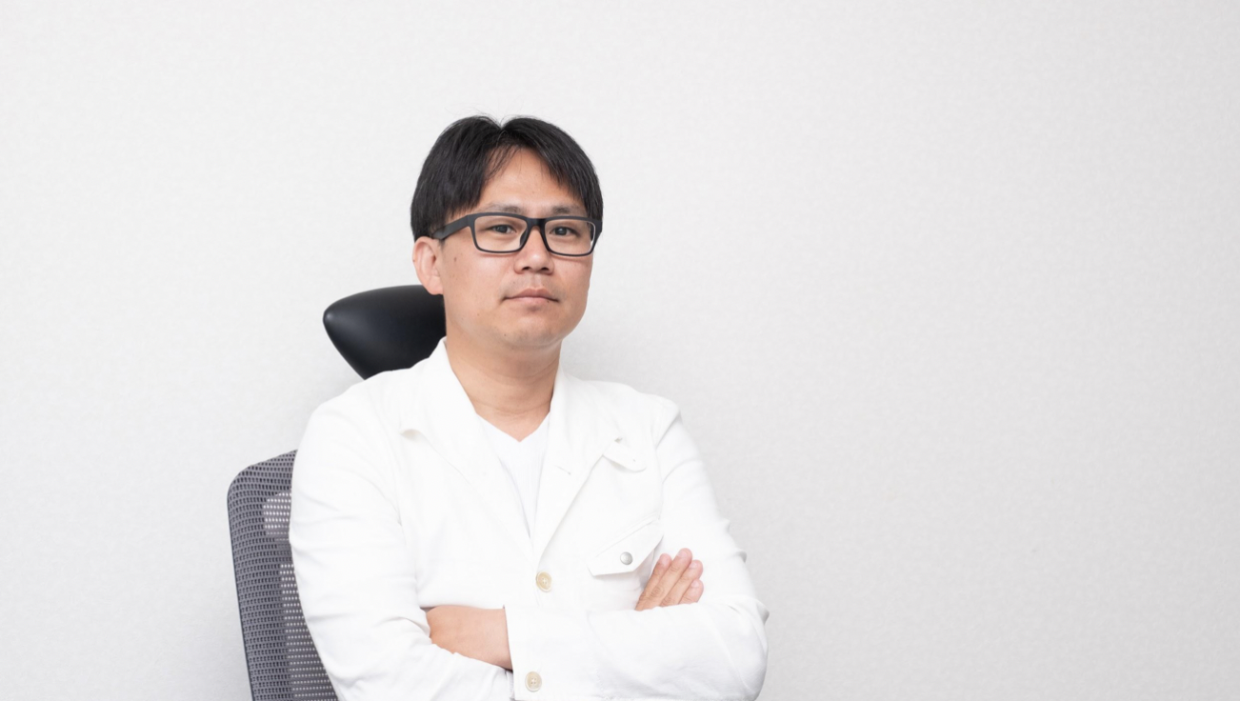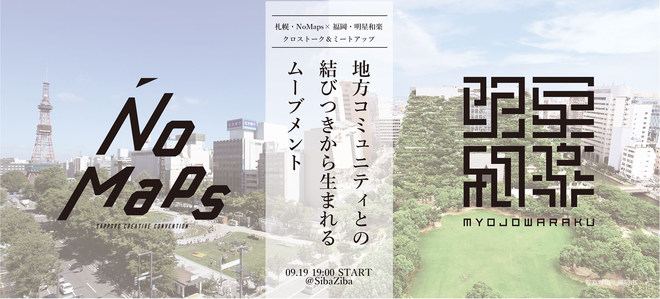Sports Sensing Co., LTD (referred to as Sports Sensing below) is a startup focused on the research, planning, manufacture and sales of applications and sensors to pro baseball clubs, top sports teams and university research centers around the Japan.
The company states that its mission is “To help improve competitive performance in all sports”, but how are they making a contribution to the sporting world? I spoke to company representative Daisuke Sawada to find out.
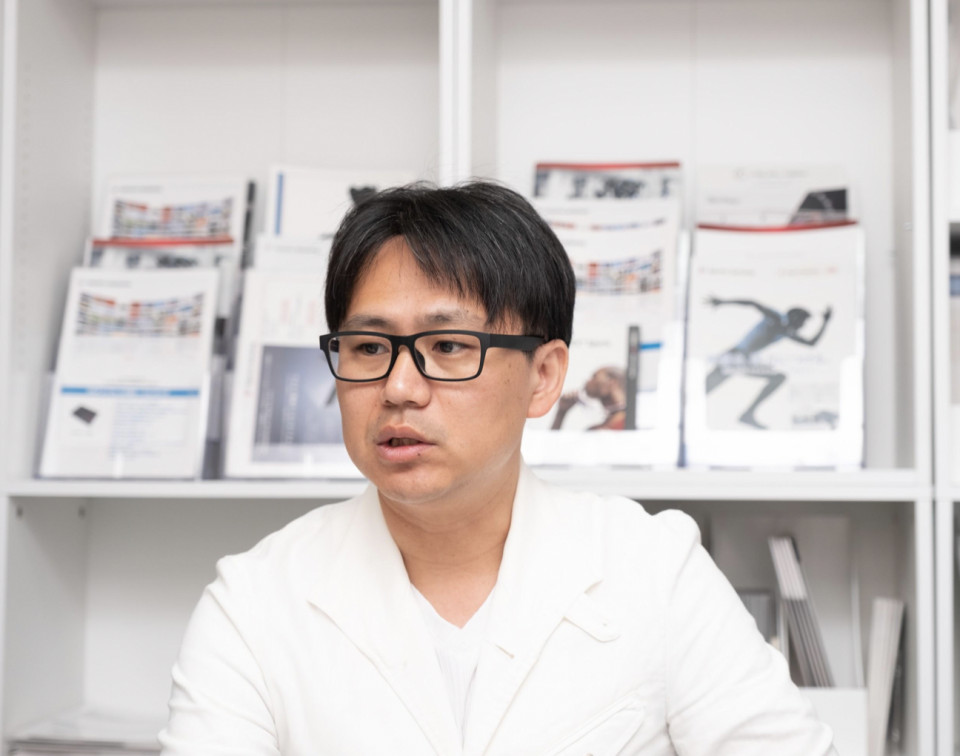
Measurement and visualization
“Compared to other areas, the arena of sport has a significant lack of tools and services. If you take the everyday example of weight training, there’s still no way to see if you are really getting results. You can train hard and not know if you’re doing it right. You just don’t know what kind of effect your training is having.” – Sawada
With this as a backdrop, the company set out to find a solution with the help of technology.
As a real world example I was shown Sports Sensing’s wireless DSP sensor.
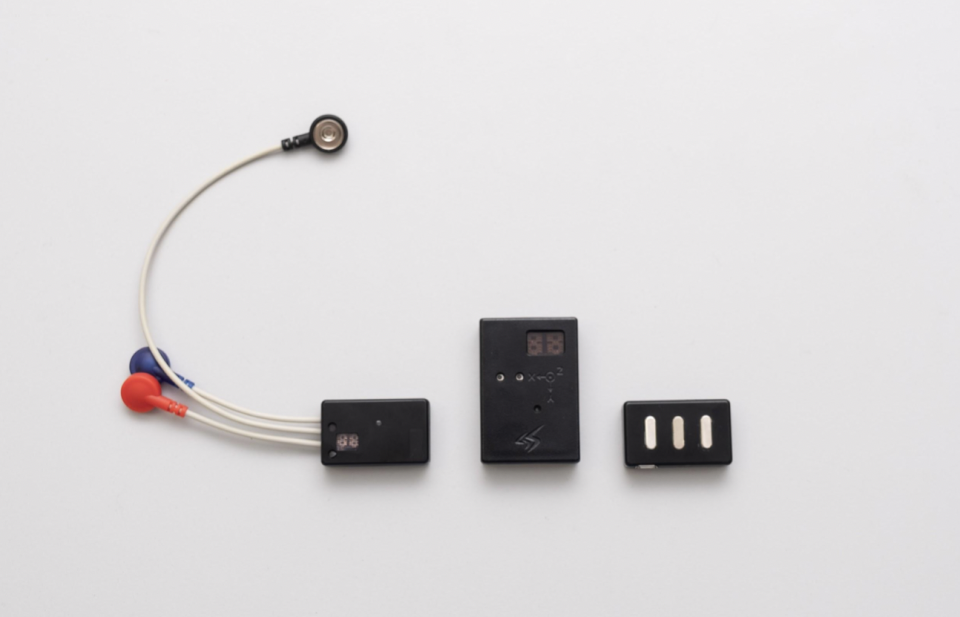 From left to right: a heart-rate sensor, a body movement sensor, an electro-muscular sensor
From left to right: a heart-rate sensor, a body movement sensor, an electro-muscular sensor
By attaching these small sensors you can measure the movement of your body and muscles.
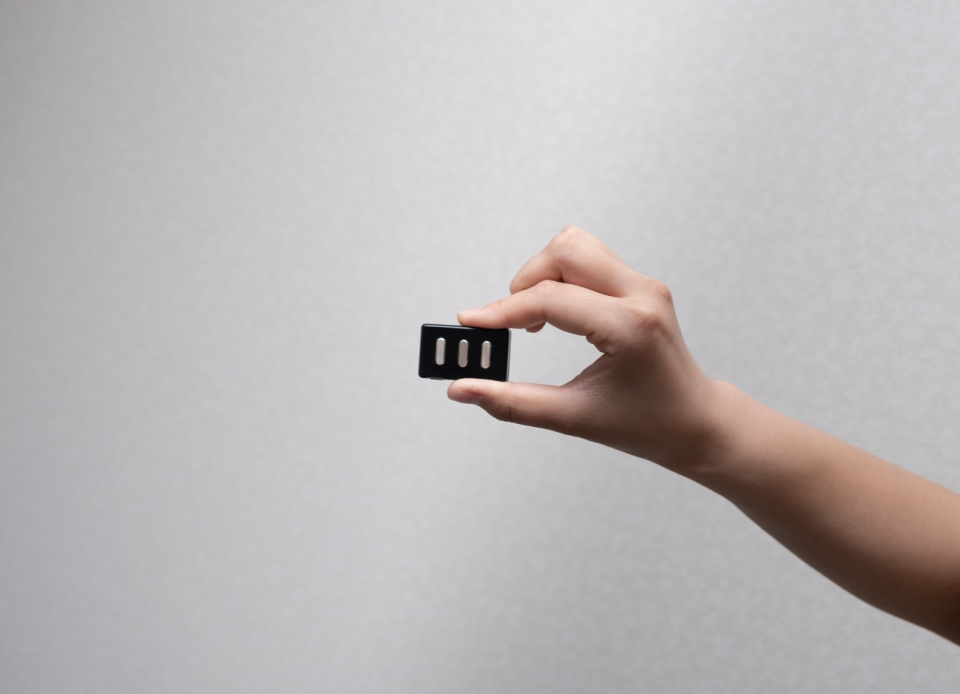 “When conducting research or doing training we attach them with athletic tape. For example, training to regain muscle mass lost after an injury. Patients conduct regular rehabilitation sessions and we can check the change in muscle mass each time. It’s just like a stepping on a scale when you’re on a diet. The difference between sports and rehabilitation is simply whether the training is intense or not. And in sports, we apply the same principles.” – Sawada
“When conducting research or doing training we attach them with athletic tape. For example, training to regain muscle mass lost after an injury. Patients conduct regular rehabilitation sessions and we can check the change in muscle mass each time. It’s just like a stepping on a scale when you’re on a diet. The difference between sports and rehabilitation is simply whether the training is intense or not. And in sports, we apply the same principles.” – Sawada
Until now, patients would have to continue rehabilitation and training until they started to see results. However, if results can be accurately measured and put into numerical form motivation will increase.
Getting into universities as a first step
In addition, Sawada thinks sports performance can be improved by making the “measurement->analysis->feedback->training” cycle faster.
“Passing on the results of measurement and analysis to players as feedback, and having them apply it in the next game or training session is the cycle. It needs to run smoothly to improve athletic performance. This is a completely indisputable idea. I don’t know about all training centers and sports teams but there are a lot of places where people train haphazardly.” – Sawada
To keep the “measurement->analysis->feedback->training” cycle moving, taking measurements is paramount. Nowadays, measurement devices are being introduced, but compared to other countries where data recording is common, the culture of quantitative measurement hasn’t taken root. Why hasn’t Japan taken to this measurement culture? One reason is the price.
“When we started the business, the only way to get these wireless sensors was to import them from outside of Japan. One sensor cost around 1 million yen (around 10,000 USD). They were very expensive.
“However, I thought it wasn’t that research couldn’t make progress due to the high price of research instruments. Our company decided to aim to get into universities and targeted a price of below 100,000 yen (1000 USD) so they could be treated as a consumable product when being expensed.
“In our product range almost everything is still under the 100,000 yen price point. In japan we’ve achieved a huge price reduction.
As a result of this one tenth price reduction our product roll-out has progressed and we are fulfilling orders from many universities. We have relationships with over 450 research labs.” – Sawada
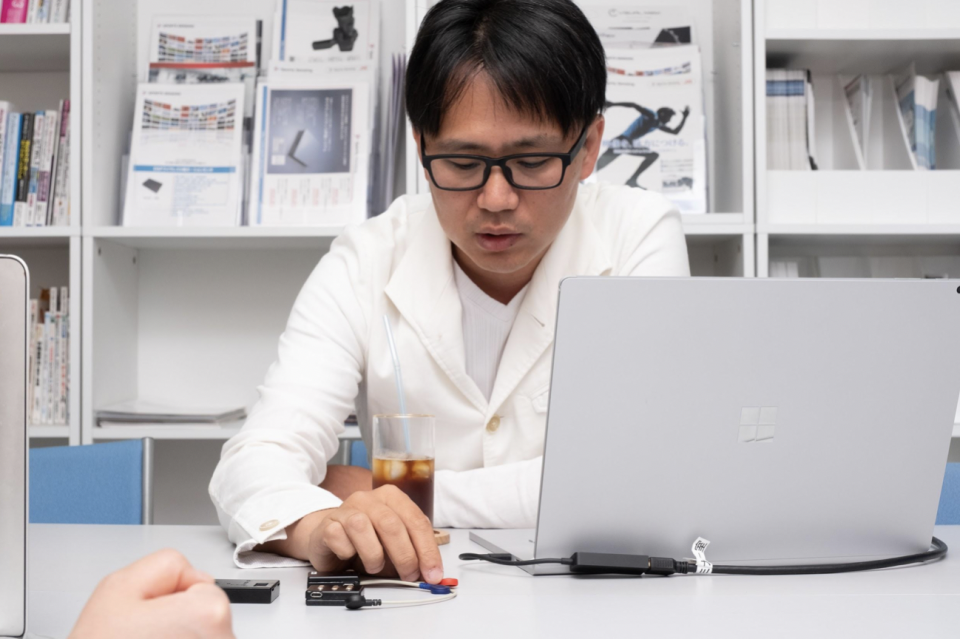
Changing the inefficient world of sport
Sports Sensing doesn’t just make sensors, they are also developing a variety of tools.
For example, they are producing a video overlay application that can combine multiple video feeds from a game and display scores.
Previously, devices made for broadcast television cost 2-3 million yen (2-30,000 USD) per match and required a specialist operator to use them. They were not the kind of thing you could just take off the shelf and use.
“If you just record and show the video then you don’t know information like what the score is at this time, who is the opposing playing and when the video is from.
As a consequence, even if you’ve gone to the effort of recording a video it’s hard to use and might be a wasted effort. We need to reduce this.”
As for other applications handling video, the company has developed and is selling a range of products to improve players technique: An app to play video from a specified location and record analytical notes on a particular opponent plus another app to take videos recorded in realtime and playback certain sections in with a time delay.
“Everyone wants to improve, but they don’t know what to use or even what products are out there.
“Until now, the concept of efficiency wasn’t widespread in the sports world. There are still a lot more things that technology can do”
An application that allows form checking by replaying selected parts of a video in slow-motion
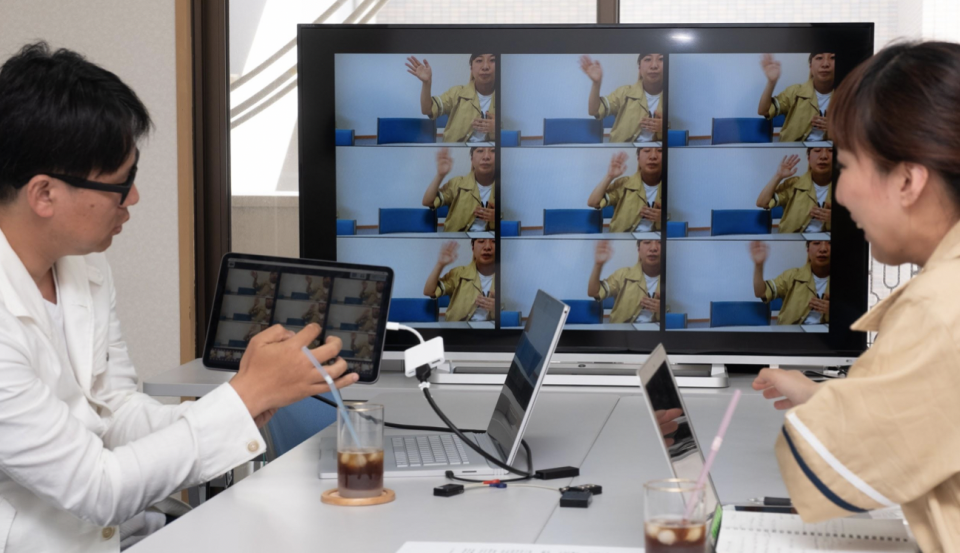
Sensors you can wear?!
Sports Sensing is now working on the development of wearable sensors.
When Sawada first thought of a sensor that players could wear during a game, the recurring problem was how to attach it. The sensors are not small and it wasn’t realistic for athletes to perform in a game with them attached.
“When trying to clear the hurdle of how to affix the sensor we thought the only way was to wear them. But we had no experience making clothes and couldn’t acquire expertise in textile technology. That’s why, in 2018, we started a joint venture with Teijin Frontier Co., Ltd., a manufacturer of textiles and textile products.” – Sawada
Our first move is developing clothing that can measure heart rate. Our heart rate measuring wearable is made from comfortable material that doesn’t restrict movement. It is already being trialled by some national level teams.
“As the fabric of the clothing performs the role of a sensor, the items can be worn during regular training and competition. When technology progresses the next step is to get more people using it. We are just at the start of this step so we need a little more effort to bring about true high quality training and instruction.” – Sawada
New records come everyday in the world of sports. Perhaps technology will become the indispensable tool behind the great leaps forward of the players.
You won’t be able to take your eyes off the excitement that comes with the evolution of the sports world, nor the developments of sports technology that come with it.


